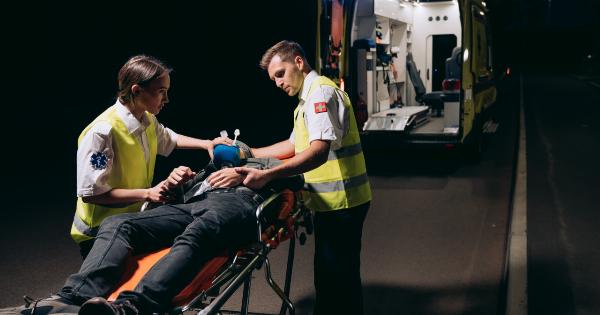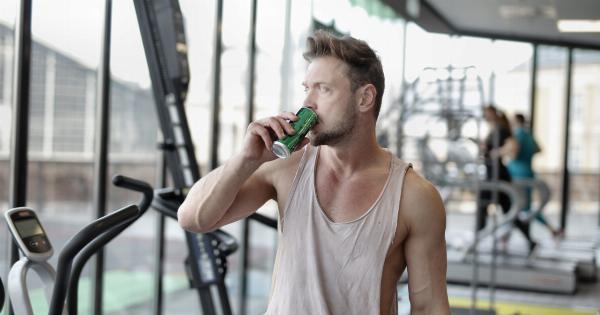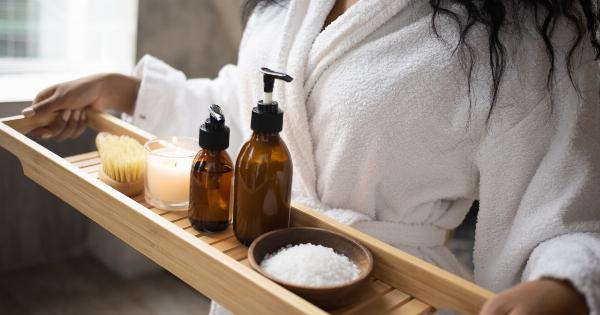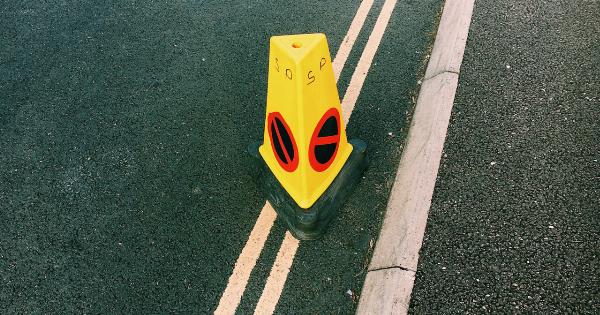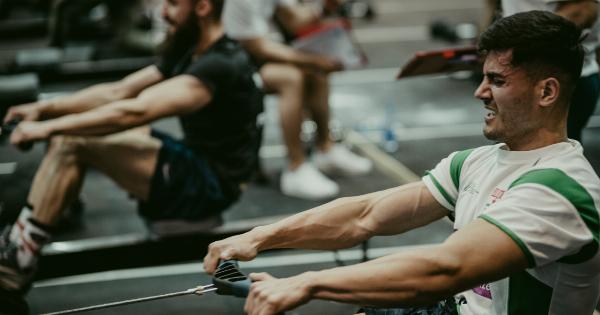Cramps are involuntary muscle contractions that can cause pain and discomfort. They can occur in various parts of the body, such as the legs, feet, hands, or abdomen. Cramps are a common problem that many people experience at some point in their lives.
While they usually go away on their own, understanding why you get cramps and how to stop them can help alleviate the pain and prevent future episodes.
What Causes Cramps?
Cramps can be caused by a variety of factors, including:.
1. Dehydration
One of the most common causes of cramps is dehydration. When you don’t drink enough water, your body loses essential fluids and electrolytes, such as sodium, potassium, and magnesium.
This imbalance can lead to muscle cramps in different parts of the body.
2. Overuse or Strain
Overusing or straining your muscles can also result in cramps. This typically occurs when you engage in intense physical activity, especially if you haven’t properly warmed up or stretched beforehand.
Athletes and individuals who frequently participate in rigorous exercises are more prone to muscle cramps.
3. Mineral Deficiencies
A lack of essential minerals like potassium, calcium, and magnesium can contribute to cramping. These minerals play a crucial role in muscle function, and their deficiency can disrupt the normal muscle contraction and relaxation process.
4. Poor Blood Circulation
Inadequate blood circulation to the muscles can cause cramps, particularly in the legs and feet. Conditions such as peripheral artery disease or sitting or standing for long periods without movement can restrict blood flow and result in muscle cramps.
5. Nerve Compression
Cramps can sometimes be caused by nerve compression. If a nerve is pinched or compressed, it can lead to muscle spasms and cramping in the affected area. This commonly occurs in conditions like carpal tunnel syndrome or sciatica.
How to Stop Cramps
Fortunately, there are several strategies you can try to stop cramps and relieve the discomfort. Here are some effective methods:.
1. Stretch and Massage
When you experience a cramp, gently stretching and massaging the affected muscle can help relax it. Slowly and carefully stretch the muscle in the opposite direction of the cramp to relieve the tension.
Applying a warm compress or taking a warm bath may also provide additional relief.
2. Stay Hydrated
Drinking an adequate amount of water throughout the day is crucial for avoiding dehydration and preventing cramps. Aim to drink at least 8 glasses of water daily, and increase your intake during periods of intense physical activity or hot weather.
3. Eat Foods Rich in Minerals
Include foods in your diet that are rich in minerals like potassium, calcium, and magnesium. Bananas, oranges, yogurt, leafy greens, nuts, and seeds are all excellent sources of these essential minerals.
Consuming a balanced and nutrient-rich diet can help prevent cramps caused by mineral deficiencies.
4. Improve Blood Circulation
To improve blood circulation, avoid prolonged periods of sitting or standing. Take breaks to move around, stretch your legs, and promote healthy blood flow.
Engaging in regular exercise, such as walking or swimming, can also help improve circulation and reduce the likelihood of cramps.
5. Take Supplements
If you’re consistently experiencing muscle cramps, consider taking supplements to address any mineral deficiencies. Consult with your healthcare provider to determine the appropriate dosage and type of supplement suitable for your specific needs.
6. Practice Good Posture
Maintaining good posture can prevent nerve compression and subsequent cramps. Whether you’re sitting or standing, ensure your spine is properly aligned and supported. This can help alleviate pressure on nerves and reduce the risk of muscle cramps.
7. Warm Up Before Exercise
Before engaging in any physical activity, it’s crucial to warm up properly. Perform gentle stretches and movements to prepare your muscles for the upcoming workout or exercise routine.
Warming up can help prevent muscle strains and cramps during or after physical exertion.
8. Use Heat or Cold Therapy
Applying heat or cold therapy can provide relief from muscle cramps. Use a heating pad or warm towel for muscle cramps caused by poor circulation, and apply an ice pack or cold compress for cramps caused by overuse or strain.
Experiment with both methods to determine which one works best for you.
9. Address Underlying Medical Conditions
If you experience frequent or severe cramps that don’t subside with home remedies, it’s important to consult a healthcare professional.
They can evaluate your symptoms and determine if there are any underlying medical conditions contributing to the cramps, such as nerve disorders or circulation problems.
10. Stay Active and Exercise Regularly
Regular physical activity and exercise can help prevent muscle cramps by improving muscle strength, flexibility, and blood circulation. Incorporate a variety of exercises into your routine, including stretching, aerobic exercises, and strength training.
However, remember to start slowly and gradually increase the intensity to avoid overexertion and cramping.
By understanding the common causes of cramps and implementing the appropriate preventive measures and remedies, you can effectively manage and reduce the occurrence of cramps.
Remember to listen to your body, stay hydrated, and maintain a healthy lifestyle to keep muscle cramps at bay.










